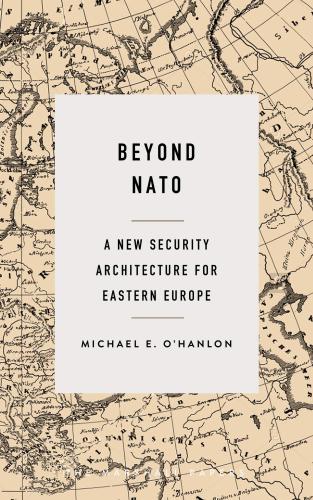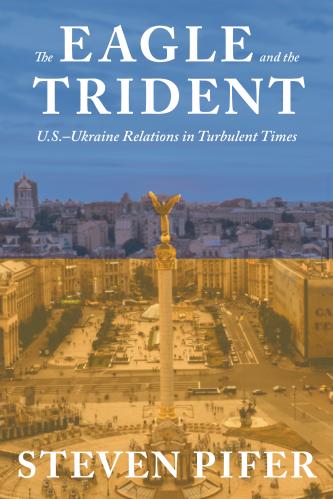On July 31, the Center for 21st Century Security and Intelligence at Brookings will host an event focused on the future of NATO and the European security order. Pre-Doctoral Research Fellow Torrey Taussig will moderate a discussion between Brookings Senior Fellows Michael O’Hanlon and Steven Pifer on the escalating Ukraine-Russia situation as Kyiv and President Poroshenko move closer to multilateral institutions like the European Union and NATO, and the role the United States and Trump administration will play in the future security of NATO.
Below you’ll find a reading list offering context, analysis, and arguments by Brookings scholars around these topics.
Ukraine, Russia, and the Prospects of NATO Membership
Although pursuing membership into the European Union and NATO has broad support from both the president and people of Ukraine, Steven Pifer argues that Ukraine’s likelihood of admittance into these organizations in the near term is zero. There currently is no enthusiasm in either organization for putting Ukraine on a membership track. In the case of NATO, the Article 5 implications of Ukraine’s admittance hold the alliance back (Article 5 commits NATO members to treat an attack against one as an attack against all). As Pifer wrote:
Until the simmering conflict in the Donbas and frozen conflict in Crimea are resolved, Ukraine has little prospect of membership. Bringing Ukraine in with the ongoing disputes would mean that NATO would face an Article 5 contingency against Russia on day one of Kyiv’s membership.
With no clear path to entry into NATO, Pifer suggests that President Poroshenko manage realistic expectations for joining the alliance, continue to deepen cooperation with NATO without calling for a membership action plan, and continue moving Ukraine in a Westward trajectory and closer to its European partners.
Pifer dives further into the complex U.S.-Ukraine relationship and how Ukraine should deal with NATO and the European Union in his recent book “The Eagle and the Trident” (Brookings Press, 2017).
President Trump’s Wavering Relationship with NATO
Throughout the campaign, candidate Trump was outspoken about NATO, highlighting problems around financial burdens. The evolution of President Trump and the administration’s stance toward NATO has been well chronicled by Brookings scholars over the last six months.
Meeting with NATO partners and heads of state on his first trip to Europe in late May, the president didn’t explicitly endorse Article 5 of the treaty—he was the first president not to do so since the treaty was signed. This decision led to a number of reactions from Brookings scholars, including Michael O’Hanlon, Constanze Stelzenmüller, Thomas Wright, and Steven Pifer.
Ultimately, Trump is the commander-in-chief. What he thinks and what he believes matters. He has a 30-year track record of criticizing America’s alliances and being favorable toward Russia. The real risk lies less in his proactive attempts to revolutionize American foreign policy—he is too weak bureaucratically for that—and more in what he will not do at a time of crisis. —Thomas Wright
(President Trump did eventually endorse Article 5 at a meeting with Romanian President Klaus Iohannis.)
Despite President Trump’s skepticism about NATO, wrote Governance Studies Senior Fellow Bill Galston, there is strong public support for NATO from both the United States and Europe. Polls reveal Americans had a 62 percent favorability rating of NATO, with substantial differences in support based on ideology and views towards Russia. “In every country surveyed,” Galston wrote:
citizens who see Russia as a serious threat were more likely to support mutual defense obligations than were those who did not view Russia in this light. The gap between these two groups is wider in the United States than in any other country. It seems plausible that allegations of Russian interference in the U.S. presidential election has intensified Democrats’ belief that Russia represents a threat to the United States, which has contributed in turn to their increased support for the responsibilities of NATO membership.
The Uncertain Future of Multilateral Security in Europe
Moving forward, the United States and Europe may need to rethink the concept of NATO expansion. In his new book “Beyond NATO: A New Security Architecture for Eastern Europe,” which is part of the Brookings Marshall Paper series, Michael O’Hanlon argues that now is the time to negotiate a new security architecture for the neutral countries of Eastern Europe to stabilize the region and reduce the risks of war with Russia. He believes NATO expansion has gone far enough.
The core concept of this new security architecture would be one of permanent neutrality. It would require that Russia, like NATO, commit to help uphold the security of Ukraine, Georgia, Moldova, and other states in the region. Russia would have to withdraw its troops from those countries in a verifiable manner; after that, corresponding sanctions on Russia would be lifted. The neutral countries would retain their rights to participate in multilateral security operations on a scale comparable to what has been the case in the past, including even those operations that might be led by NATO and would also retain their rights to join any economic or diplomatic association of states (including the EU, should European Union states themselves also favor this idea).
Listen to more of Michael O’Hanlon’s views on the United States and the future of NATO here. And make sure to visit on July 31 when our panel addresses all of these issues and more from 10:00-11:30 a.m. at the Brookings Institution.
Chris McKenna contributed to this post.





Commentary
NATO at a crossroads: A reading list
July 27, 2017